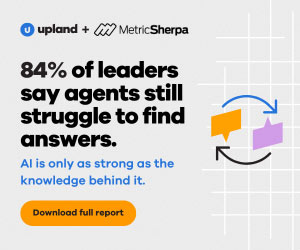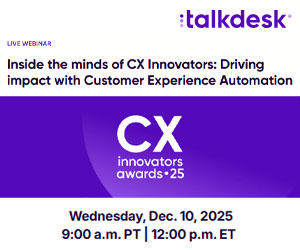Our panel of experts share some great ideas for driving up efficiency in the contact centre.
1. Coach Acknowledgement, Signposting and Next Issue Avoidance
By coaching these three skills, you can improve advisor confidence, better control handling times and reduce repeat calls:
- Appropriately acknowledge – Making the customer feel like they’re in safe hands from the start positively impacts the conversation length and reduces repeat contact.
- Signposting – By taking proactive control of the customer conversation, not only does it improve customer experience, it also improves efficiency within the customer contact.
- Next issue avoidance – What customers need are advisors who are looking to head off future problems and prevent customer callbacks.
Further efficiency benefits that you may get from improving these three skills include less customer uncertainty and fewer complaints, fewer hand-offs and higher employee engagement, customer satisfaction and customer confidence.
2. Be Smart With Knowledge Management
If you know what your top ten call drivers are, construct knowledge management algorithms to make it easy for advisors to find what they’re looking for.
Other top tips for driving efficiency from your knowledge management systems include:
- Create a style guide, so that knowledge articles can easily be templated and advisors know immediately that if something is in italics that is what they say to the customer, in bold that is where they click, etc.
- Develop a solid review process for new knowledge, so that only clear, concise and helpful content is added to your knowledge management systems.
- Analyse how well knowledge articles are used in terms of helping the advisor resolve customer contacts and use that analysis to improve the knowledge available.
Remember, designing knowledge management systems with customers and advisors at the heart results in a better experience for both.
3. Cultivate Accountability, Curiosity and Presence
Three standout mindsets to cultivate in the contact centre in order to improve efficiency are:
- Accountability: This is about looking objectively at a situation and making deliberate choices about how you will handle it. It doesn’t necessarily mean you get the output that you want, or that you’re able to solve things. Our actions and the language we use are the ways we can demonstrate accountability.
- Curiosity: Being curious is a state of mind and a very powerful way of remaining open to new information. Instead of jumping to conclusions in your mind, we remain open to the fact that there could be a different interpretation than our own.
- Presence: Presence is a state of being attuned to the other person or an activity we are taking part in. Some people call this “flow”. In this mindset, our thoughts, speech, and body language is aligned.

Lee Jones
The bottom line is that advisors should start and end their working day wanting to solve the customer’s problem, wanting to stay curious and wanting to really listen to the customer.
If the team can’t get their mindsets right, they are not going to get the conversation right.
Thanks to Lee Jones at Elev-8 Performance
4. Involve Advisors in Talent Acquisition
Too much emphasis is spent on résumé keyword searches and not enough on talking to candidates in phone interviews to gauge their communication skills.
After all, handling calls is the job of an advisor, right?
That’s why companies should involve top advisors and their supervisors — the people who know the job best — when screening candidates. Their experience would help determine whether an applicant has the right attitude and aptitude for success.
Their experience would help determine whether an applicant has the right attitude and aptitude for success.
In addition to supervisors providing on-the-job training, they and their top advisors should be involved with onboarding. This would better acclimate new employees to the company culture, welcome them as an important part of the team, and build morale.
Lastly, there should be career paths for agents to make a full transition to talent acquisition. Their expertise would greatly benefit the hiring process, plus their interpersonal strengths would make them fantastic evangelizers of the company’s mission and attract more like-minded, driven candidates.
5. Create a Continuous Training Plan
Start by conveying to new hires that there is a certain uniformity with every call’s beginning and end. During the first 30 seconds of any call, an advisor must demonstrate confidence, competence, and empathy to let customers know they’re in good hands.
This all hinges on have a good continuous training programme that increases efficiency. Such a programme may include:
- Role plays
- E-learning / mobile learning
- Workshop sessions
- Call listening
- Mentoring
- Gamification
- Video creation
As advisors learn the ropes and gain confidence, begin cross-training them to handle other types of calls. This will enable you to improve efficiency through creating more flexible work schedules, preventing burnout and decreasing turnaround times for calls.
Finally, incentivize your advisors to be more productive. Don’t just deliver online reports that anonymously compare them to their co-workers, create competitions and reward them for meeting or beating personalized benchmark goals.
6. Give Every Advisor Two Monitors
Comfort has never gone out of style. By making your agents’ workspaces more comfortable, you could achieve tremendous gains.
For example, John Peddie Research reports that users experience a 42% increase in productivity when they work with two monitors.
7. Introduce a Genius Hour
A contact centre benefits when management provides better training and implements the latest technologies, but breakthrough ideas to improve productivity and efficiency can also come from your agents.

Yasir Bugrara
Software Advice, a company that evaluates contact centre software, champions a weekly genius hour. During this time, advisors can suggest improvements to processes, learn how to become more involved in improving workflow solutions, as well as provide tips and advice that expedite calls and improve customer experience.
A genius hour focuses on constructive dialogue, not complaints, and is meant for agents to feel more invested in their work. It can lead to agents becoming more integral members of the team and have a positive impact on contact centre productivity.
Thanks to Yasir Bugrara at Voci Technologies
8. Analyse What Your Top Advisors Are Doing
Take a look at your top quartile of advisors in terms of customer satisfaction and average handling time (AHT). Who is appearing in both groups?

Richard Kenny
Identifying these advisors and analysing their calls may help you to find great behaviours that you can look to replicate across the contact centre.
Finding a list of rapport-building techniques can be a great way to improve efficiency. But it is also important to consider whether you are creating a high level of sound quality to maximize their value. High-quality audio can’t be compromised for those working-from-home environments.
Thanks to Richard Kenny at Poly
9. Appoint an “Efficiency Champion”
Do you have an advisor who is amazing with both call quality and efficiency?
Appoint them as an “Efficiency Champion” to spread best practice to their colleagues – and even run workshops.
After all, advisors often absorb coaching and ideas better from their peers than from reading statistics from a report, or when feeling pressured in a meeting with their manager.
10. Be Transparent in Your Goal Setting
Be transparent about your goals and regularly present performance figures to all teams.
In this way, everyone will know where they are with their own performance and they will be clear on what is expected.
If someone isn’t meeting their goals and performing at the expected level, don’t shy away from difficult conversations.
Then, if someone isn’t meeting their goals and performing at the expected level, don’t shy away from difficult conversations.
Create a supportive working environment to discover what is happening so that you can come up with the right solutions to help them on the path to achieving their potential.
11. Set Up a Focus Group Across All Levels
Consider setting up a focus group made up of people from across the business to review efficiency at all levels.

James McCready
Not only will this help ensure processes are synchronized, but it will also ensure that future changes or new processes can be embedded more easily.
Finally, ensure your management team have all the tools they require to identify and resolve performance issues. What they don’t know, they can’t remedy.
Thanks to James McCready at Sensée
12. Break Up Training Into Bite-Sized Chunks
Too often we look at efficiency as how we take an existing process and execute it more quickly. But sometimes, what you really need is to define a new process or way of working to be innately more efficient!
Advisor training and coaching is one of those processes which often gets pushed to the side due to inefficiency, and it’s because the traditional model just doesn’t cut it in today’s fast-paced contact centre.
The “old way” of scheduling advisors to be off phone at a specific time to go sit in a classroom session or complete a long online training session is not efficient for most types of training.
Provide bite-sized coaching and training sessions to agents throughout their existing workday…
An efficient, more sustainable coaching model is to provide bite-sized coaching and training sessions to agents throughout their existing workday via their contact handling interface.
Think of it as a ten-minute soft skills training here, a five-minute training video to watch there – all woven into their existing downtime between interactions (when they would otherwise probably twiddle their thumbs or surf the internet!)
This transforms advisor idle time into training time, a double win for contact centre efficiency and continuous advisor development.
13. Automate Performance Scorecards
A major time waster in the contact centre is the process of pulling and managing data to get insights that are actionable.
Performance management software can make this entire process more efficient by automating these activities from beginning to end.
These tools can help to extract data, derive and calculate the metrics you need, format and display it in a digestible visual format and automatically send the data to stakeholders without any human intervention.

Lauren Comer
If your contact centre is struggling to justify the purchase of performance management software to automate this inefficient process, start tracking the amount of time that your team is currently spending pulling these reports, creating macros, and then sharing the data throughout the organization.
Most contact centres quickly find that the efficiency gains outweigh the cost – and often even find that they can free up a full headcount in the process!
Thanks to Lauren Comer at NICE InContact
14. Simplify the Advisor Desktop
All advisors want is a common, consistent experience using one interface for all their desktop applications.
Advisors have to use a great number of tools in the contact centre when they need access to certain data. The ideal outcome is to transition to a place where the systems architecture is hidden and advisors can easily access everything from an easy-to-navigate desktop.

Graeme Gabriel
Think of a “single pane of glass” where complete customer journeys are reflected, from the channels they use to previous purchases and past conversations. This can revolutionize advisor productivity.
It’s easy when contact centres look for the right data and apply it intelligently and in three ways, to customers, employees and the business.
Thanks to Graeme Gabriel at Calabrio
15. Earn Advisor Buy-In for Your Workforce Management Strategy
The biggest single cost in contact centres is people costs. More efficient advisor deployment will therefore deliver the biggest improvement in overall efficiency.
You can achieve this through forecasting accurately, efficiently scheduling around peaks and troughs in contact volumes and then managing shrinkage and adherence.
Yet this is easier said than done.
WFM applications can help. They empower you to react quickly to deviations from plan.
The efficiency magic happens when you optimize agent schedules, with the help of a tool, and combine that with buy-in to flex working times around your peaks.
You don’t have to do one big bang. If you can just optimize the shifts of new hires, or start optimizing breaks and lunches; you’ll see a tremendous improvement.
Thanks to Chris Dealy at injixo
16. Improve Communication Between Departments
Build strong lines of communication with department heads across the organization, allowing advisors to streamline requests and quickly provide appropriate information back to the customer.
If the contact centre does not have steady relationships and efficient internal communication channels with each of the organization’s core departments, these organizational silos will keep advisors from being properly set up for success and capable of resolving customer problems quickly.

Jen Jackson
A video solution can also help improve efficiency by providing the customer with a more direct medium to outline the issue along with more personalized service, creating a deeper sense of trust with the advisor and improving the overall call resolution experience.
As remote contact centres grow, it’s imperative for organizations to rely on technology that can facilitate a more hands-on, connected and personal approach from the advisor.
Thanks to Jen Jackson at Lifesize
17. Multiskill Your Advisors
Having larger groups of multiskilled agents improves the efficiency of your call handling as well as reducing wait times and abandon rates.
In addition, when customers are presented to a suitable agent, they should be automatically answered, rather than being passed around different agents until someone answers.

Craig Farley
That 10 to 20 seconds of ring time per contact makes a big difference – it is essentially “dead”, unproductive time which, when added up, could have meant a lot more calls being answered.
Also, it can be the difference between a customer being answered within service level or not. Or even worse, abandoned.
Thanks to Craig Farley at IPI
18. Get Personal With Customers
If advisors have comprehensive customer views, they can provide fast and effective service.
Contact centres need to be mindful of demographics and behaviours so they can design tailor-made strategies for certain customers.

Neil Titcomb
Training advisors to deal with specific situations enables the contact centre to segment customers to offer them highly personalized care.
Another useful tool to improve efficiency is proactive cross-channel management. This is a unified console that gives visibility to numerous interactions, so advisors can easily move from one interaction to another.
Thanks to Neil Titcomb at Odigo
19. Reduce Silence on Calls
The amount of silence on calls says a lot about how effectively the calls are being handled and can help organizations identify and fix critical contact centre inefficiencies.
Silence often indicates that advisors do not know what they should do next or that an individual agent needs additional training in certain areas. It can also highlight larger behavioural issues, such as if an agent is ‘hanging on calls’ after completion.

Frank Sherlock
Regular blocks of silence can also highlight that a company’s tools or systems (CRM, databases, order management, etc.) are not properly serving the contact centre. Those problems are correctable through training and system configuration, but they need to be identified before they can be fixed.
With speech analytics technology, contact centres can detect periods of silence during phone calls and dig deeper to find the root cause.
Thanks to Frank Sherlock at CallMiner
20. Use Gamification to Reduce Advisor Turnover
Keeping a stable team within your contact centre will reduce training costs and increase productivity, resulting in a more efficient contact centre. The key to this is building a culture that supports a happy and engaged workforce.
One way to do this is by incorporating an element of gamification. Gamification is particularly effective within the contact centre for its ability to engage employees carrying out high-volume and repetitive tasks.

Scott Budding
Gamification introduces game design elements into real-life tasks and activities to make them more fun and engaging. Some workforce management (WFM) tools come equipped with a gamification module where contact centre agents are positioned as players of a game.
The system then rewards performance based on predetermined parameters and metrics. With this module, reports and statistics are compiled daily, allowing agents to keep track of their ‘game progress’ for motivation and engagement.
Thanks to Scott Budding at Business Systems
21. Offer Self-Service for Simple Queries
If you want to confirm that a package has been shipped or check a balance on an account, it can be useful to self-serve and avoid the need to speak to an advisor.

Tim Kimber
When this happens, customers get the information they’re looking for, and their experience is a more efficient and personalized one.
What’s more, advisors are freed up and can spend more time focusing on more complex enquiries or handling new business.
Thanks to Tim Kimber at Vonage
22. Provide Advisors With Real-Time Guidance
Low efficiency is often caused by agents being bogged down with mundane tasks…
Low efficiency is often caused by agents being bogged down with mundane tasks, not asking the questions that identify the root cause of the customer concerns or lacking knowledge on how to properly resolve an issue.
This has been further exacerbated with agents working at home and lacking access to a supervisor or teammates to request assistance.
Real-time guidance tools act as an advisor’s automated personal desktop helper. It guides them in real time on the next-best-action and automates routine desktop activities using advanced desktop analytics and decision-making capabilities to optimize performance.
The tools are designed and built with the at-home employee in mind and enable them to provide quick, accurate and consistent customer service the first time, even on complex requests.
23. Get Predictive With Your Call Routing
Some advisors have a better “connection” with certain personality types, and the resulting conversations tend to have a lower handle time, higher contact resolution rate and better customer satisfaction results.
Most contact centres route interactions randomly to the first available advisor. However, with predictive behavioural routing, customers are connected with agents based on their personality.

Aviad Abiri
The technologies leverage artificial intelligence and machine-learning-built databases of customer behavioural profiles to understand their service preferences.
By doing so, contact centres can match customers and advisors in a way that creates exceptional experiences, differentiates the organization, reduces handle time and improves efficiencies.
Thanks to Aviad Abiri at NICE
24. Smarten Up Your Coaching Strategy
Call recordings have become industry standard for customer-facing businesses, and most of us will have become accustomed to the phrase: “This call is being recorded for training and monitoring purposes.”
However, for businesses making and receiving thousands of customer calls weekly or even daily, supervisors simply don’t have the time to listen to them all.

Neil Hammerton
For this reason, some contact centres do not proactively listen to recordings at all and instead wait for a complaint to be made.
Speech analytics can help here. By analysing call transcripts, the technology can identify the parts of customer calls where training opportunities are present.
Thanks to Neil Hammerton at Natterbox
25. Speed Up Identification and Verification Processes
Voice biometrics uses sophisticated algorithms to analyse more than 1,000 voice characteristics – from pronunciation to size and shape of the nasal passage.

Sebastian Reeve
Meanwhile, behavioural biometrics measures the most minute details – such as how an individual holds their phone, how they type and even whether they pause once they finish a task.
Both technologies can be used to validate whether someone is who they say they are immediately based on how they sound. This can help to automate what can be an arduous process for both the customer and the contact centre.
Thanks to Seb Reeve at Nuance
26. Equip Leaders With Key Performance Insights
Managing remotely is difficult, particularly when it comes to assessing call quality and customer experience. However, the right tech can transform that.
One example is a headset which provides data and analytics that allows managers to assess background noise levels.
These headsets can feedback key insights, such as:

Nigel Dunn
- Whether audio quality is within appropriate levels
- If the advisor can be heard by the customer
- Who the advisor is talking to
- The length and number of calls.
To improve contact centre efficiency, business leaders can take advantage of the technology they have at their disposal.
Thanks to Nigel Dunn at Jabra
27. Track the Right Key Performance Indicators (KPIs)
KPIs give us an idea of contact centre demand and help to inform our customer experience strategy.
By tracking the correct call centre KPIs, you can view, model, and understand the customer experience and optimize efficiency.
Through best utilizing these KPIs, with the help of tools like the balanced scorecard, it’s possible to maximize business objectives, maintain customer expectations and improve team performance.
28. Focus on Lowering Complaints
One of the telltale signs of an inefficient call centre is complaints. Not only do they indicate dissatisfaction, they’re also extremely time consuming.
But how do we reduce the number of negative interactions to improve efficiency?
The starting point is to research the cause of negative interactions through techniques such as:
- Analysing complaint volumes for common themes
- Digging into the root cause of escalated calls
- Talking to the team about what isn’t working

Alicja Robertson
Yet, to take this all one step further, you can turn to technology.
AI tools can also help through learning to recognize negative interactions before they escalate, with a focus on making real-time changes and offerings.
Thanks to Alicja Robertson at Aspect Software
For more great advice from our panel of experts, read our articles:
- 23 Ways to Improve Long-Term Productivity in the Contact Centre
- 29 Mistakes That Your Contact Centre Might Be Making
- 18 Simple Ideas to Reduce Your Abandon Rate
Author: Robyn Coppell
Published On: 24th Mar 2021 - Last modified: 12th Sep 2025
Read more about - Call Centre Management, Alicja Robertson, Alvaria, Aviad Abiri, Business Systems, Calabrio, CallMiner, Chris Dealy, Craig Farley, Editor's Picks, Graeme Gabriel, IP Integration, Jabra, Lifesize, Management Strategies, Natterbox, Neil Hammerton, Neil Titcomb, NiCE, NiCE CXone, Nuance, Odigo, Peopleware, Poly, Productivity, Richard Kenny, Scott Budding, Tim Kimber, Voci Technologies, Vonage, Yasir Bugrara






































